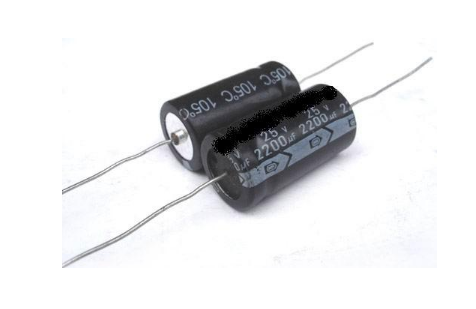About polar capacitors and non-polar capacitors
I came across a statement online that says, "To connect two electrolytic capacitor anodes or cathodes in series to form a non-polar electrolytic capacitor." I'm not sure I fully understand this. Electrolytic capacitors are typically polarized, meaning they have a specific positive and negative terminal. If you connect the anodes or cathodes of two electrolytic capacitors in series, would that really create a non-polar capacitor? When a voltage is applied after such a connection, wouldn’t the polarity cause electrolysis, leading to breakdown?
I’m hoping someone can clarify this for me. I know that non-polar electrolytic capacitors are available on the market, and my company uses them. They are standard products from reliable manufacturers.
However, these capacitors aren’t just two electrolytic capacitors packed into one case. Instead, they use two layers of etched aluminum oxide foil inside.
If you remove the electrolyte, you’ll notice that the two layers of aluminum foil are different: one is thin and smooth, while the other is thick and rough. The latter is actually corroded and oxidized, with the insulating layer being the oxide film on its surface.
Because the two layers have different structures, they each have a polarity. Once both are oxidized, the capacitor becomes non-polar. But how exactly does this work?
The idea of connecting two electrolytic capacitors in series to make a non-polar one seems interesting, but it’s not without risks. If you reverse the polarity of one capacitor, the leakage current increases significantly because the reverse insulation resistance of the oxide layer is low. This can lead to excessive heat, causing the electrolyte to expand, evaporate, or even burst the casing.
When two capacitors are connected in series, it's similar to having two diodes in reverse. In any given direction, the reverse voltage drop is small, so most of the voltage ends up across the forward-biased capacitor. As a result, neither capacitor overheats. The overall insulation resistance is also higher than a single capacitor.

Of course, this method requires using two identical capacitors. If they’re too different, the imbalance could still cause problems. It’s best suited for low-voltage and low-energy applications due to safety concerns. High voltages should be avoided.
The key principle here is that the forward resistance of an electrolytic capacitor is much higher than its reverse resistance. Without this condition, the method won’t work effectively.
This setup must be considered in both transient and steady-state conditions. For example, if you apply an AC signal to two capacitors connected in series, and initially both are uncharged, the first half-cycle will charge one capacitor while the second half-cycle charges the other. Eventually, both capacitors will reach the peak voltage of the AC signal.
After that, the capacitors act as a single unit in series, with the total capacitance being half of each individual capacitor. Removing the diodes (which simulate the reverse resistance) shows that the behavior is similar to having a resistor in parallel with the capacitor, where the forward resistance allows some discharge, but the reverse resistance prevents it.
In terms of DC, things are different. A pure DC signal doesn't involve capacitors, as they act like open circuits. However, if there's an AC component superimposed on the DC, the circuit needs to reach a steady state where the capacitors are charged to the peak voltage.
So, in summary, connecting two electrolytic capacitors in series can simulate a non-polar capacitor under certain conditions. However, it’s important to understand the limitations and potential risks involved. Always ensure the components are matched and used in safe, low-voltage environments.
Insert Type Rotor,Insert Type Dc Rotor,Insertion Type Variable Frequency Rotor,Variable Frequency Dc Rotor
Suzhou Mountain Industrial Control Equipment Co., Ltd , https://www.szmountain.com